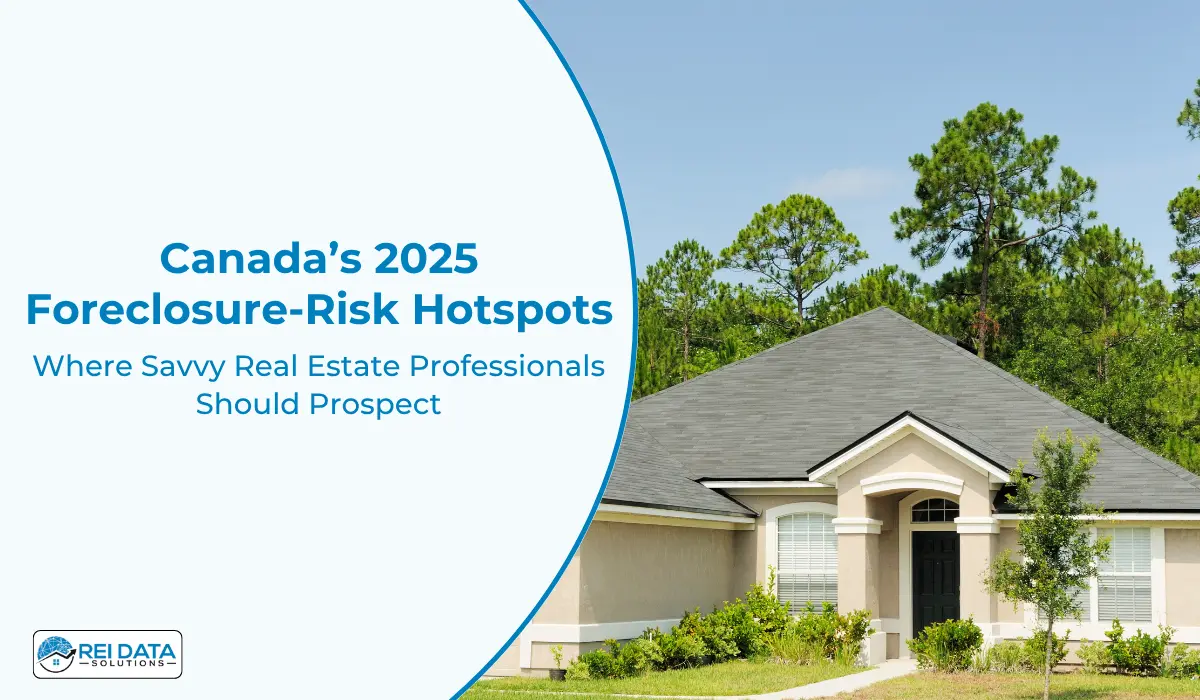Email newsletters have been especially powerful for real estate agents. Newsletters are more than just emails; they’re an opportunity for you to educate, engage, and connect with your audience and build your relationship.
If you can pull it right, real estate newsletters can drive amazing traffic to your website, help position you as a trusted expert, and boost your leads.
In this blog, we’ll talk about some creative real estate newsletter ideas to help you craft your next campaign. Let’s dive in!
1. How-To Articles
Share practical tips and how to guide, like “How to Budget for a New Home” or “Steps to Prepare Your Home for Sale.”
Include a catchy title, a short description, relevant image and an appealing CTA if you want to drive action.
2. Evergreen Content
Leverage timeless topics such as home-buying tips, product reviews, or market insight updates that are perfect for early-stage leads.
They always remain relevant and retain their value over time.
3. Educational Resources
Create long-form content like ebooks or in-depth guides on homeownership and share snippets in your newsletter.
Include a link where readers can access the full version of the content on your website.
4. News Highlights
Share trending industry news, like local market trends or government policy updates, as summaries.
These articles keep your audience informed and position you as an industry expert.
5. Curated Content
Feature highlights from trusted resources, such as other leading blogs or market analysts, share what experts predict about the housing market and summarize the insights for your audience.
6. Business Updates
Give your audience a behind the scenes peek with updates on your latest achievements, new office opening, properties sold or other personal milestones. This adds a personal touch and builds trust.
7. Interviews
Interview with local industry experts or influencers and share the details in your next real estate newsletter.
Here are some examples:
- Share tips from mortgage brokers on securing loans
- Advice from home stagers on maximizing property appeal
8. Guest Contributions
Invite other professionals to contribute to your blog and repurpose their insights in your newsletter.
9. Simplified Educational Content
Repurpose long-form content like blogs, guides, or eBooks into concise takeaways.
Share key points to pique readers’ interest and then direct them to your website for the full details with call-to-action buttons.
10. Government Programs for Buyers
Inform audiences on the latest updates about federal or state programs. Add your own professional insights on how these initiatives impact the local market.
11. Housing Market Updates
Summarize data from reputable sources like NAR and CoreLogic on home prices, sales trends, and values to add value for audiences.
12. Mortgage Insights
Keep audiences updated on mortgage rates and application trends. Highlight the potential benefits and risks for buyers.
13. Local Affordability Studies
Highlight reports on housing affordability in specific areas to help prospects gauge whether homeownership fits their budget.
14. Consumer Sentiment Trends
Share summaries from indices like the Bloomberg Consumer Comfort Index and elaborate what they imply. It helps your readers get a broader view of the economic trends and make informed decisions.
15. Distressed Property Reports
If pre-foreclosures, foreclosures or short sales are common in your market, include updates on inventory and sales statistics, and advice for taking advantage of these opportunities.
16. Employment and Income Data
Showcase local job creation, unemployment rates, and income trends, and emphasize how these factors influence housing demand in your area.
17. Personal Finance Tips
Educate readers with actionable advice on saving for a home, managing budgets, maximizing tax refunds, and improving credit scores. This will turn your newsletter into a valuable resource.
Break down the pros and cons of renting vs. buying in your local area and provide personalized insights into cost differences.
18. Local Laws and Regulations
Explain what new laws or regulations are put in place and how they may impact homeowners and buyers.
19. Major Property Sales
Highlight notable property sales or other significant market moves in your area to keep your audience engaged and informed.
20. Showcase Unique Properties
Share standout properties in your market—whether it’s a quirky architectural gem or a celebrity-owned home.
Create blog posts about these fascinating listings with high quality images and share snaps in your newsletter. Encourage people to check all details in your blog page.
21. Simple Local Market Data
Compile key statistics on local home prices, sales trends, and new constructions. Use attention grabbing visuals like graphs and charts to make the data engaging and easy to digest.
22. Tax Info Homeowners
Offer concise, frequently updated information on property taxes. Share links to a dedicated webpage on your newsletter so readers can check details about rates, deadlines, and potential deductions.
23. Share Testimonials
Happy client testimonials are one of the best tools to entice new clients. Share snaps of happy families in their new home, stories about their buying experience, and a cherry on the top—a recommendation for your service.
24. Home Insurance Insights
Guide first-time buyers through the complexities of homeowner’s insurance by sharing tips on selecting the right insurer and ways to lower premiums.
25. Tax Breaks for Homeowners
Explain lesser-known tax incentives or breaks available to homeowners, helping them save money while positioning yourself as a knowledgeable advisor.
26. Mortgage Refinancing Tips
Educate your audience about refinancing such as timing, potential costs, and expected savings. Provide insights from lenders and clients to make the process less daunting.
27. Home Loan Pre-Qualification Steps
Help potential buyers understand the steps toward homeownership. Share tips on credit score improvement, gathering necessary documentation, and understanding pre-qualification criteria to prepare leads for the buying process.
28. Home Renovation Ideas
Share practical advice on tackling common home upgrades, like adding a new room or upgrading a kitchen. Partner with local contractors to provide expert tips or share your own insights from personal experience.
29. How to Find and Hire Contractors
Share ideas on how readers can find trustworthy professionals in the area. Include step-by-step tips on researching reviews, comparing quotes, and hiring the right pro.
30. Home Maintenance Basics
First-time homeowners often don’t realize how much maintenance goes into keeping a house in great condition.
Share simple guides on everyday tasks like cleaning gutters, maintaining HVAC systems, and lawn care.
31. Safe-Proofing for Children and Pets
Safety is a top priority for families and pet owners. Include advice on creating secure spaces, such as installing baby gates, securing furniture, and choosing pet-friendly flooring. These tips tell the parents and pet lovers that you are thoughtful about them.
32. The Ultimate Homeowner Checklist
Checklists are a favorite content format for their practicality and ease of use.
Create a seasonal checklist covering everything from changing air filters and checking smoke detectors to deep-cleaning carpets.
33. Tips for Working with an HOA
Share tips for resolving conflicts, understanding bylaws, and effectively communicating with HOA boards. Help your readers make the most of their communities.
34. Highlight Local Gems: Events, Eats, and Attractions
Sharing a curated list of local highlights is a simple and easy way to connect with your audience.
Prepare a list of trending restaurants, parks, outdoor activity spots, community events etc. It turns your newsletter into a go-to resource for discovering what’s special in your neighborhood.
35. The Newest Dining Hotspots
Highlight recently opened restaurants or restaurants famous for special cuisines in your area.
Share tips on where to get the best brunch, tastiest pizza, or trending cocktails. With Yelp and TripAdvisor at your disposal, it’s super easy to compile a list.
36. Small Business Spotlights
Feature local boutiques, artisan shops, or photographers, quirky stores to showcase your support for independent local businesses. This will foster community pride, introduce residents to businesses they haven’t discovered yet and build goodwill.
BTW, giving exposure to a needy photographer can help you get a nice deal for your next property photography.
37. Community Events Guide
Compile a schedule of local festivals, parades, and seasonal markets for your audience. Add a quick description of each event and don’t forget to include photos of past events or promotional flyers.
38. Niche Hobby Groups and Meetups
Help homeowners find hobby and interest groups, such as hiking clubs, knitting circles, or local charity organizations where they can connect with like minded people or do activities together.
39. Spotlight on Local Heroes
Feature notable community members in your newsletter, like small business owners, educators, or emergency responders, sportspersons. Their stories inspire pride in the community.
40. School and District Updates
Keep your readers informed about what’s happening in local schools by sharing important updates from district meetings, new policies, upcoming programs, or achievements. This information is especially valuable to parents who are often the ideal candidate for home buying.
41. DIY Tips for Buyers and Sellers
Both homeowners and future buyers appreciate practical advice for home improvement. Include “how-to” guides for common tasks like staging a home, upgrading appliances, or quick DIY fixes to boost curb appeal. These tips position you as a source for all things home-related.
42. Weekend Plans
Provide a “Weekend Guide” featuring the top attractions and activities. Include family-friendly options, date night suggestions, and outdoor activities. Keep it aligned with your audience and they will surely appreciate the effort.
43. Simplify the Home Buying Process
Break down the home buying process step by step, with practical tips that will help your audience feel more confident. People will start seeing you as a trusted advisor and consider talking to you whenever they plan on buying a home.
44. Starting the Home Search
Kick off a newsletter series guiding prospective homeowners on where to begin their journey. Include tips like filtering real estate search results to match their priorities or how to balance budget with dream features.
45. Home Hunting Apps & Tools
Equip your readers with top-rated apps and resources to simplify their home search. Share user-friendly apps that streamline the process, from finding listings to budgeting.
To add value, test a few yourself first and provide firsthand insights.
46. Pricing a Home to Sell
Offer a behind-the-scenes look at what factors into pricing, like market trends, location, and comparable sales.
47. Tips for Moving
Relocating with kids and pets can feel a bit overwhelming. Share advice to help families manage this transition smoothly. Include expert-backed tips.
48. List of Moving Companies
Share tips on avoiding pitfalls and finding dependable movers. Curate a list of movers. If possible, include contact details.
49. Long-Distance Moving Advice
Cross-country moving is more daunting. Educate people on long moves and share insights from people who have made the move. Focus on logistics, budgeting, and preparing emotionally for the change.
50. Home Staging Hacks
Staging significantly impacts how quickly and profitably a home sells. Share tips for creating inviting spaces, like decluttering, neutral décor, and highlighting unique features.
Why You Should Be Sending Real Estate Newsletters
- Stay Top of Mind: Newsletters ensure your brand remains visible and memorable when your audience is ready to buy or sell
- Build Relationships: Newsletters foster a genuine connection and loyalty by offering relevant information tailored to clients’ and prospects’ needs
- Showcase Expertise: Local market insights, trends, and updates position you as a trusted authority
- Drive Traffic and Leads: Including clear calls-to-action (CTAs) in your emails encourages recipients to take the next steps in the lead funnel
- Cost-Effective Strategy: Compared to traditional ad campaigns, newsletters offer a high return on investment and flexibility
Best Practices for Real Estate Newsletters
To make the most of your newsletters, follow these strategic guidelines:
- Identify your target demographics, their preferences, and their needs. Tailored content is key to better engagement.
- Share actionable insights, aim to educate and entertain without being overly promotional
- Decide on a schedule—whether weekly, bi-weekly, or monthly—and stick to it
- Leverage top blog posts, guides, or other content that resonates with your audience
- Craft compelling subject lines to increase open rates
- A visually appealing and mobile-responsive design ensures readability and accessibility
- Encourage action by adding clear CTAs, such as scheduling a showing, exploring listings, or contacting you for consultations
- Track metrics like open rates, click-through rates, and conversions
- Adhere to GDPR and CAN-SPAM regulations
We hope these newsletter email ideas will help you build trust among clients, build your brand and attract potential clients.




